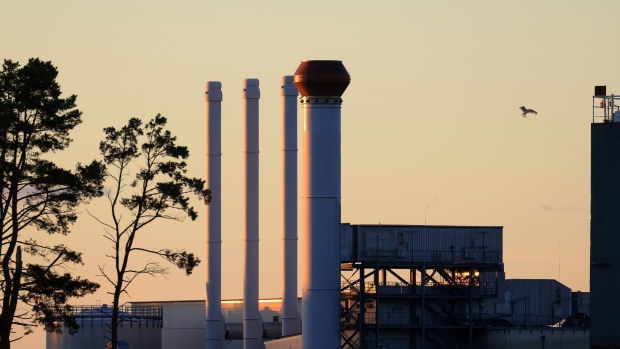Sep 13, 2022
Europe Gas Drops Again as EU Plans Intervention to Tackle Crisis
, Bloomberg News

(Bloomberg) -- Natural gas advanced with supply risks still in focus as the European Union continued to work out the details of its plans to ease the worst energy crisis in decades.
Benchmark futures settled 4.2% higher, ending two sessions of consecutive declines. The European Commission, the bloc’s executive arm, is due to unveil its proposals this week. Member states, which are divided, still have to sign off on the plans.
The EU is seeking to curb power consumption and provide liquidity in an attempt to prevent the crisis from engulfing the broader economy. It’s also zeroing in on a plan to cap the revenue of energy companies’ profits and funnel the cash to consumers.
“Ways of limiting the high energy costs are still being sought at the political level,” analysts at Commerzbank AG said in a note. “Even if gas prices have fallen significantly of late, it is by no means time to sound the all-clear.”
Capping prices of gas the EU gets from overseas appears to be off the table. German Chancellor Olaf Scholz was the latest to warn against such as move, saying it could lead to reduced supply from the world market. Controlled rates in Europe could potentially make other demand centers, such as those in Asia, more attractive for sellers. Instead, Germany plans to implement a power-price cap “with great speed” to help consumers and companies cope with soaring costs.
Also read: Germany Plans $68 Billion Loan Guarantees for Energy Firms
While the policy measures are being worked out, gas continues to be pumped into inventories to allay some fears over winter supply. European storage sites are about 84% full, slightly above the five-year average, and at 88% in Germany, according to Gas Infrastructure Europe. While the heating season in the continent officially starts in just over two weeks, some regions typically keep injecting the fuel into stockpiles as late as October before demand starts draining it.
At the current pace of injections, and in the event of a normal winter, northwest European gas storage will remain 34% full by the end of March even with Russia stopping supply through the Nord Stream pipeline, JPMorgan Chase & Co. said in a note. If it gets colder than average, that level could drop to 14%, the bank said.
“The strong build-up of gas and coal storage thanks to demand destruction in European industry and elsewhere were on the bearish side,” said Andy Sommer, team leader for fundamental analysis and modeling at Swiss utility and trader Axpo Solutions AG. “Only the current constraints on market liquidity can help fully explain prices which experienced a massive rollercoaster during August, initially more than doubling before dropping back by 30-40%.”
Slams Economy
Russia’s huge gas-supply cuts have slammed Europe through the summer with industries producing everything from metals to fertilizers forced to reduce output, and bringing the economy to the brink of recession. Inflation has surged to multiyear highs and the cost of living crisis has deepened, compelling governments to step in to help ease the pain.
The EU is urging consumers to reduce demand. The Commission is eyeing a target to cut overall power consumption by 10% and a mandatory goal of 5% during selected peak hours, according to people familiar with the talks. The final numbers will need to be approved by the bloc’s commissioners who were meeting on Tuesday.
Commission President Ursula Von der Leyen is expected to set out her plans on Wednesday. The Czech rotating presidency has called another emergency meeting for Sept. 30, after previous discussions among energy ministers last week.
Front-month Dutch gas futures settled at 198.61 euros per megawatt-hour. The UK equivalent contract reversed declines to close 5.1% higher.
©2022 Bloomberg L.P.






